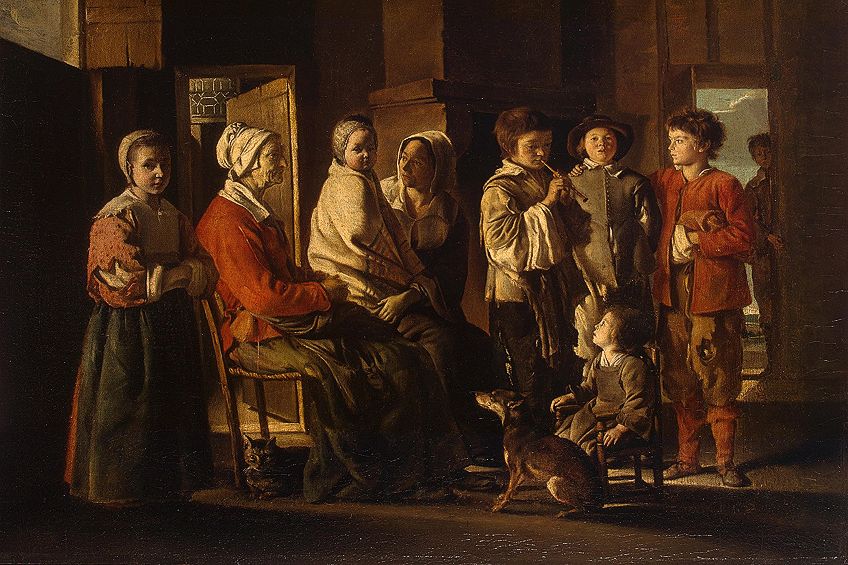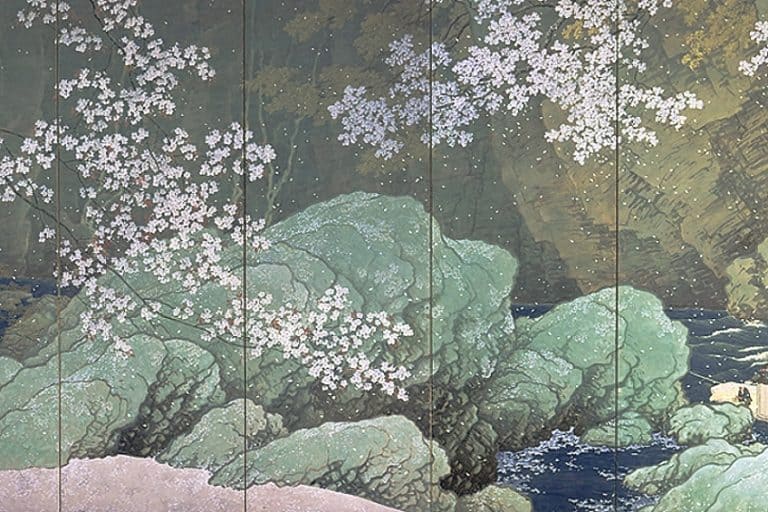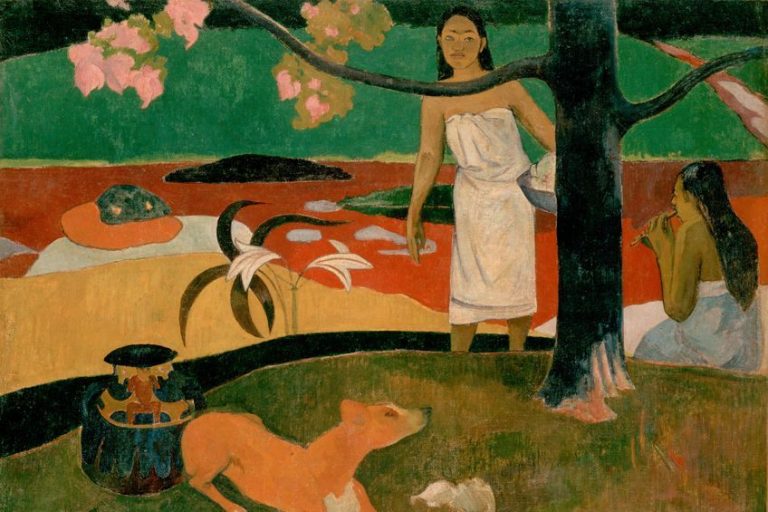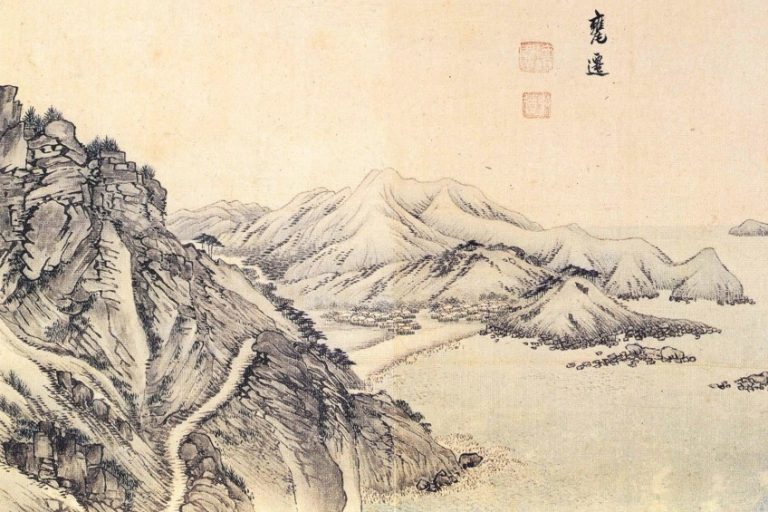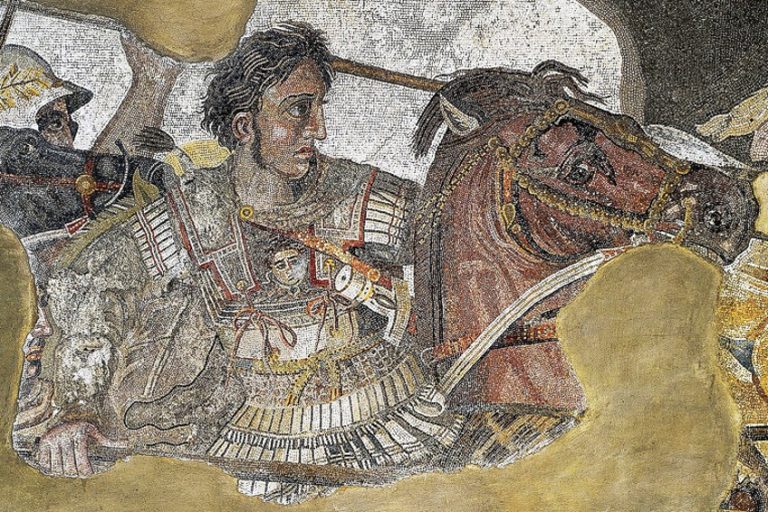Baroque Art – Exploring the Exuberance of Baroque Period Art
The Baroque period emerged after the Renaissance and Mannerism periods and brought with it new perspectives about life, art, religion, and culture. The Baroque style moved away from the severe elements depicted by the Protestant style, while the Catholic Church supported the development of Baroque with its origins in Rome, Italy, and many European countries. In this article, we unpack the decorative and fanciful art period encompassed by Baroque art, including its most famous artists and the origins of the movement.
Historical Foundations of the Baroque Period
When was the Baroque period? The Baroque period began during the the late 1500s and lasted until the early 1700s. The movement’s reach was considered to be incredibly wide and varied throughout many European countries. The Baroque style was founded on the principles of extravagance, ornateness, and intricately decorated details that were portrayed in a range of traditional mediums such as paintings, architecture, sculpture, literature, and music. It was regarded as a period of revival across art and culture, with deep roots in the religious structures and powers of Western Europe at the time. These religious structures included the Catholic Church, which is presently referred to as the Roman Catholic Church.
Baroque art, of any kind, was inseparably linked to the Catholic Church. In fact, the Church had a great influence over shaping the conventions around what art should look like to have a desired effect on the people. Baroque art was made to inspire grandeur and awe in the people who experienced it and became a wholly new sensory religious experience.
The Catholic Church supported the Baroque style because it needed a new and enlivened approach to inspire and uplift the common people, as well as to connect them with the Church and its majestic nature.
After the turmoil of war and conflicts from the Reformation, Baroque art offered a refreshing resurgence for the Church and its community. The driving forces behind this can be considered propagandist, as it used the modes of visual representation and communication via painting, architecture, sculpture to maintain the credibility and authority of the Catholic Church.
To better understand the advancements that Baroque art brought to art and culture in the 17th century, we need to look at the historical foundations underpinning this complex movement.
The Reformation: The Catholic Church and Protestants
The Baroque period developed from considerable political and religious upheaval in Europe, such as the Reformation between the Protestants and the Catholic Church during the 1500s. Although the Reformation may have started with many other religious figures before Martin Luther (a German monk, priest, and theologian), many scholarly sources point to him as the catalyst of the Reformation, which set these events in motion.
Martin Luther is known for his publication entitled, “95 Theses”, which he wrote in 1517 out of apprehension about various questionable actions by the Catholic Church. His apprehensions were primarily about the Church (under Pope Leo X) selling indulgences, otherwise known as plenary indulgences, to people to raise money to build St. Peter’s Basilica in the Vatican City of Rome.
Indulgences were almost like certificates guaranteeing people that they would go to Heaven and spend less time in Purgatory if they offered donations to the Church, did a good deed, visited a certain place, or recited a prayer. In this case, the financial donations helped the Pope build the Basilica. Martin Luther did not agree with this type of procedure, as he believed no one needed to pay for their place in Heaven. Furthermore, he had other deeper concerns about the Church and its stance on various religious matters relating to the Catholic Sacraments.
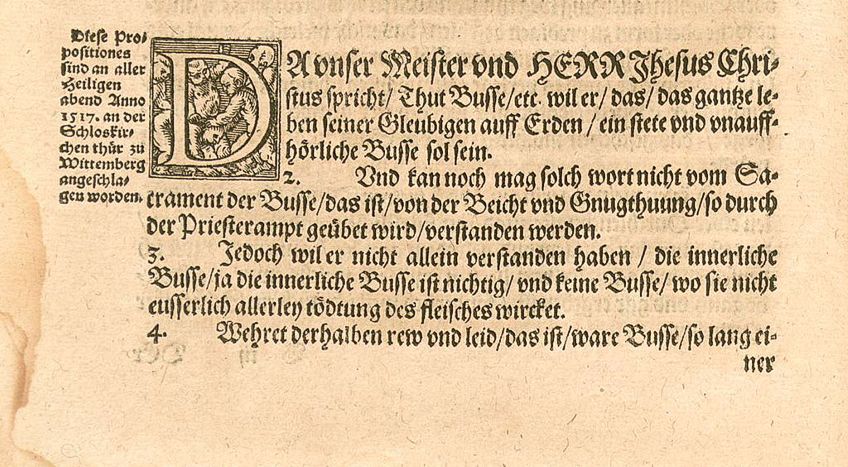
During this time, Martin Luther taught Moral Theology at Wittenberg University and he was also a preacher. He heard about the information that indulgences were being sold, and was made aware of sermons being given near Wittenberg by another preacher called Johann Tetzel, a German Dominican preacher who was also the Grand Commissioner for indulgences.
Martin Luther sent the “95 Theses” to the Archbishop of Mainz, who was Albert of Brandenburg at the time, to inform him about what was happening. He also posted it on church doors in Wittenberg, which was a common practice to do. The availability of the printing press allowed Martin Luther to make numerous copies of his publications. In fact, hundreds were printed in Germany, as well as translated to German from Latin. The document eventually landed in the hands of many respected intellectuals. It was in 1521 when Martin Luther came to strong disagreements with the Church, as he would not renounce his views when asked to.
As a result, he was denounced from the Church and considered a “notorious heretic” in the Edict of Worms, declared by Emperor Charles V.
After the turn of events from the Reformation, which was believed to have ended either during the Peace of Augsburg in 1555 or during the Treaty of Westphalia in 1648, the Catholic Church formed a Counter-Reformation, which lasted between 1545 and 1563 with the Council of Trent. The Council of Trent consisted of many meetings addressing various issues and procedures present within the Church and its systems.
The Protestants Versus Counter-Reformation Groups
The Counter-Reformation also sparked new developments in art and spirituality. The Protestants sought to do away with a lot of the Catholic Church’s religious imagery, agreeing that it was too extravagant. Some Reformists violently destroyed the Catholic Church’s religious imagery, known as iconoclasm. The Protestants believed religious images should only depict Jesus or images of the cross, in line with Protestant values. The Protestant Reformation held onto the idea that images should not be used for religious worship, of which the point was argued by the Counter-Reformation group that such artworks and images were didactic contributions that provided clear narratives about key iconographies.
As a response to the severe styles depicted in Protestantism, the Catholic Church believed religious imagery held a lot of power. Furthermore, during the events of the Council of Trent, it was decided what religious imagery would be acceptable or not. The “pastoral role” of art was considered a primary purpose of religious imagery, meaning that artists could depict the stories of Christ’s suffering, crucifixion, and many of the saints related to Biblical stories. The council members made strict rules that all imagery could not contain any idolatrous innuendos.
What followed were new artistic styles and attitudes depicted in religious imagery, better known as the Baroque period.
A Flawed Pearl: Definition of Baroque
By understanding the meaning of the term “Baroque”, we will gain more context about what Baroque art stood for and was. The art developed during this time was the visual result and achievement borne from deeper historical, social, and political issues in Europe. It was an age of discovery undoubtedly, introducing new concepts and techniques within the art world, and hence, an achievement.
The term baroque has been understood within various contexts. It is a French word, but its root origin is traced to the Portuguese barocco, which means “a flawed pearl”. This term was related to jewelry as early as the 1500s onwards. It was used to describe the shapes of real pearls.
There are other definitions of the term that relate to philosophy, specifically logic, or Aristotelian Logic. As a Latin term, baroco, was used to assist with remembering syllogisms, which were used in deductive reasoning formulas. Several scholars and philosophers applied this word beyond the school of logic, for example, Michel de Montaigne defined it as “bizarre and uselessly complicated”.
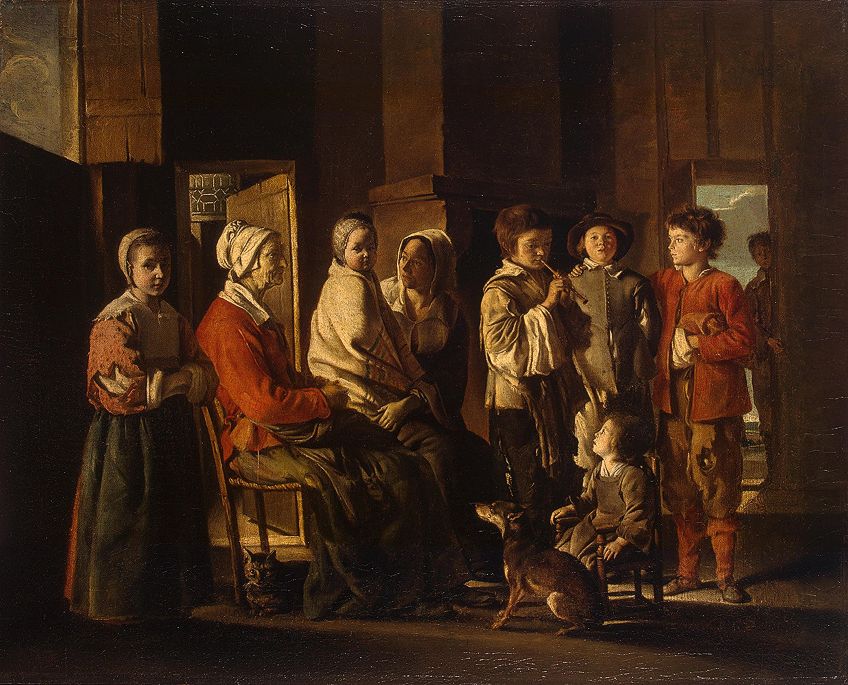
Jean-Jacques Rousseau, a philosopher and musician in the 1700s, described Baroque music as being disharmonious in the Dictionnaire de Musique (Dictionary of Music, 1768), stating, “Baroque music is that in which the harmony is confused, overcharged with modulations and dissonance. The song is hard and unnatural, the intonation difficult, and the movement constrained. It would seem that this term comes from the baroco of the Logicians”.
Heinrich Wölfflin, an art historian from Switzerland, described “baroque” within the context of being an art style in his publication Renaissance und Barock (1888). In whichever manner this term has been defined over the centuries, the underlying essence certainly conveys a sense of imperfection, confusion, and maybe even disorder and beauty.
This is evident in the Baroque style, whether it be paintings, sculptures, architecture, music, or literature. Below, we take a closer look at what Baroque Art is.
What Is Baroque Art?
Baroque Art was pioneered by noteworthy painters, architects, and sculptors who brought the visual power of art to the masses. There were many important figures in the Baroque period. For example, artists like Caravaggio, who portrayed strong realism in his paintings, the Carracci brothers and their Bolognese School, which sought to move away from the art of Mannerism (the art period after the Renaissance), and Giacomo Della Porta, an Italian architect. We will look at these artists and their contributions to the Baroque style in greater detail below.
Baroque Art Characteristics and Techniques
What set the Baroque period apart from the Renaissance and subsequent Mannerism periods was its focus on more liveliness in its subject matter and a stark realism. Some sources also describe it as focusing on the moment the event is taking place, or otherwise the “action” or drama. The subject matter was of religious and biblical narratives, as instructed by the Catholic Church. These would range between images of the Virgin Mary, the various Saints, and various stories from the Bible.
Furthermore, Baroque paintings were characterized by the use of vibrant colors applied with swirling and wide brushstrokes, which indicated movement and emotional intensity.
This painting style focused on depicting large expanses of light and openness, which was also seen in architecture, such as the churches with expansive areas within the center of the building, capped by cupolas (domes or square-like crowning structures over a roof) above for more light to enter the building.
Chiaroscuro
Chiaroscuro is an Italian term that means “light-dark”. It focuses on defining contrasts in painting. This technique started in the Renaissance period, but it was the way Caravaggio utilized it that it became a popular characteristic of the Baroque period. With the strong emphasis on dark and light within his compositions, the viewer almost becomes a part of the event portrayed in the painting.
An example includes Caravaggio’s The Calling of St. Matthew (1599 – 1600), where we see the right finger of Christ pointing towards St. Matthew. The light and shadow on the wall from the incoming sunlight are directly echoed alongside Christ’s pointing finger.
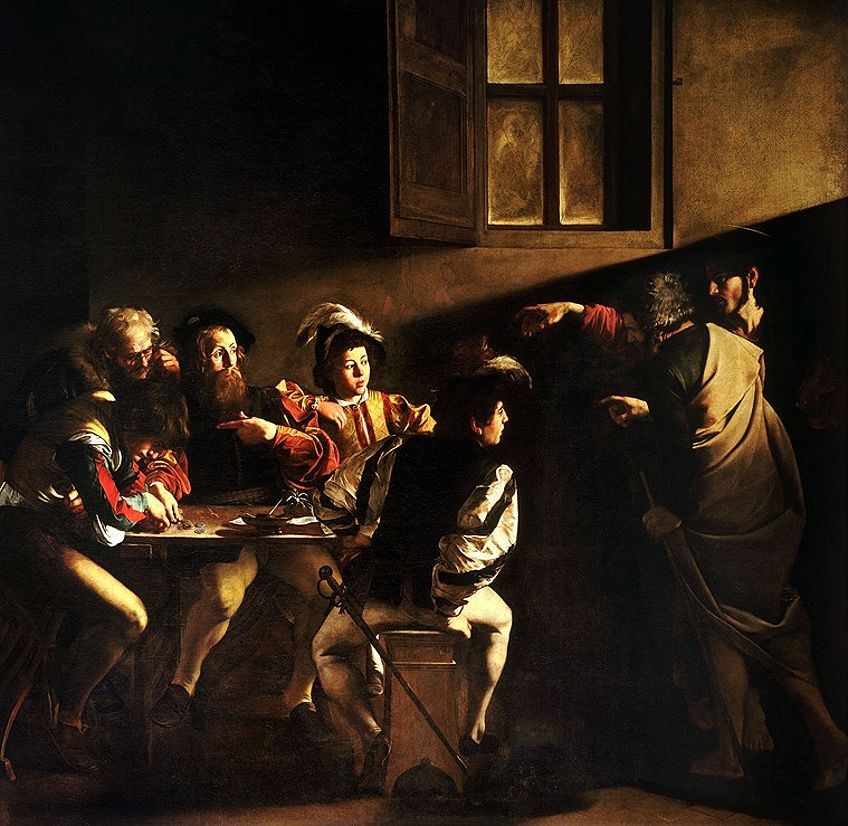
Tenebrism
Tenebrism was another technique used by several Baroque painters, popularized and believed to have been started by Caravaggio. Although it is like chiaroscuro, it mainly focuses on the darker areas of a painting. The term originates from the Italian word, tenebroso, which in turn originates from the Latin, tenebra, meaning “darkness”. Other words related to this term are “gloomy” and “mysterious”. It sought to create what is referred to as the “spotlight” effect, also called “dramatic illumination”.
Quadro Riportato
Quadro Riportato means “carried picture” in Italian and was a term used to describe a technique by which the artist would paint what appeared as a frame around a painting, which would consist of a series of paintings displayed as a fresco. This technique was used by one of the forerunners of the Baroque period, Annibale Carracci and appears most evident in The Loves of the Gods (1597-1600) fresco on the Farnese Palace’s ceiling.
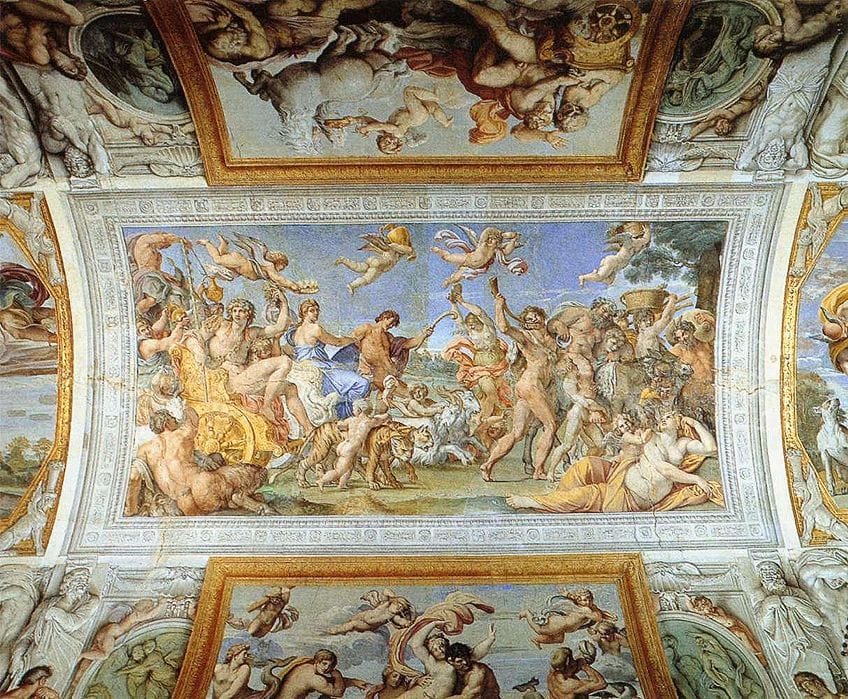
Illusionism: Trompe l’Oeil and Quadratura
The idea of “opening up” spaces within paintings was a large part of Baroque Art, as this also gave the sense of it being an optical illusion with the painted image appearing three-dimensional. Creating this three-dimensionality was known as trompe l’oeil, which means “deceive the eye” in French.
We can see this on many of the frescos in churches and paintings throughout the Baroque period. However, it did not start during this art period and can instead be found dating back as early as the 1800s. In fact, this technique was used as early as some Greek mural paintings, as well as far into the future with artists like Salvador Dali, who utilized this technique in his Surrealist paintings.
Baroque artists employed another perspective technique called quadratura, which depicts images that appear like parts of real architecture and are intentionally painted as continuations of the real architecture. This technique used theories based on architectural perspective to apply it accurately.
Famous Baroque Painters
Below, we look at only a handful of well-known Baroque artists, including prominent painters, architects, and their buildings, as well as sculptors and their sculptures. However, this does not exclude the many other masterpieces created during the Baroque period and what they contributed to this period of art and culture. Baroque paintings were found far and wide around Europe, and we will see paintings from Italy, France, Spain, Flanders, Holland, England, and Germany.
Many artists had other creative attributes that made them not only painters, but sculptors, draftsmen, drawers, and architects, among others. Among the most celebrated Dutch painters in art history include figures like Johannes Vermeer and Rembrandt van Rijn, while French painters like Claude Lorrain and Charles Le Brun went on to influence many artists in the centuries to follow, with contributions to major institutions such as the Palace of Versailles. Other prolific painters like Nicolas Poussin and Anthony van Dyck were also known to establish unique and impactful history and landscape paintings.
We will see that there is a lot of crossover between many of these painters, as each of them drew inspiration from many sources during this time, including the styles of prominent masters from the Renaissance period like Michelangelo, Titian, and Raphael.
Annibale Carracci (1560 – 1609)
| Artist Name | Annibale Carracci |
| Date of Birth | 3 November 1560 |
| Date of Death | 15 July 1609 |
| Nationality | Italian |
| Associated Movements, Themes, and Styles | Baroque art, Classicism, mythology, religious art, portraiture, and landscape painting |
| Mediums | Painting |
Annibale Carracci pioneered Baroque painting along with his brother, Agostino Carracci (1557-1602), and their cousin, Ludovico Carracci (1555-1619). They are well known for starting the Bolognese School of Art (1590-1630), initially named Accademia dei Desiderosi, which they later changed to Accademia degli Incamminati (Academy of the Progressives). This was a turning point for art in Italy as it moved away from the styles called Realism and Mannerism. Annibale Carracci sought to depict elements of Classicism and Naturalism in his artworks. He is remembered as having a realistic style with large brushstrokes.
He drew from the High Renaissance’s stylistic theories of perspective and proportion to enhance the aesthetic and naturalistic appeal.
Carracci’s artworks had a lively effect and were painted in life-size and full-length in order to create a deeper emotional connection with the viewer. Additionally, he used the technique of illusion, as his paintings almost invited the viewer to become a part of the subject matter through realistic portrayals, often of religious figures and landscapes. Examples include Pietà (1585) and Resurrection of Christ (1593).
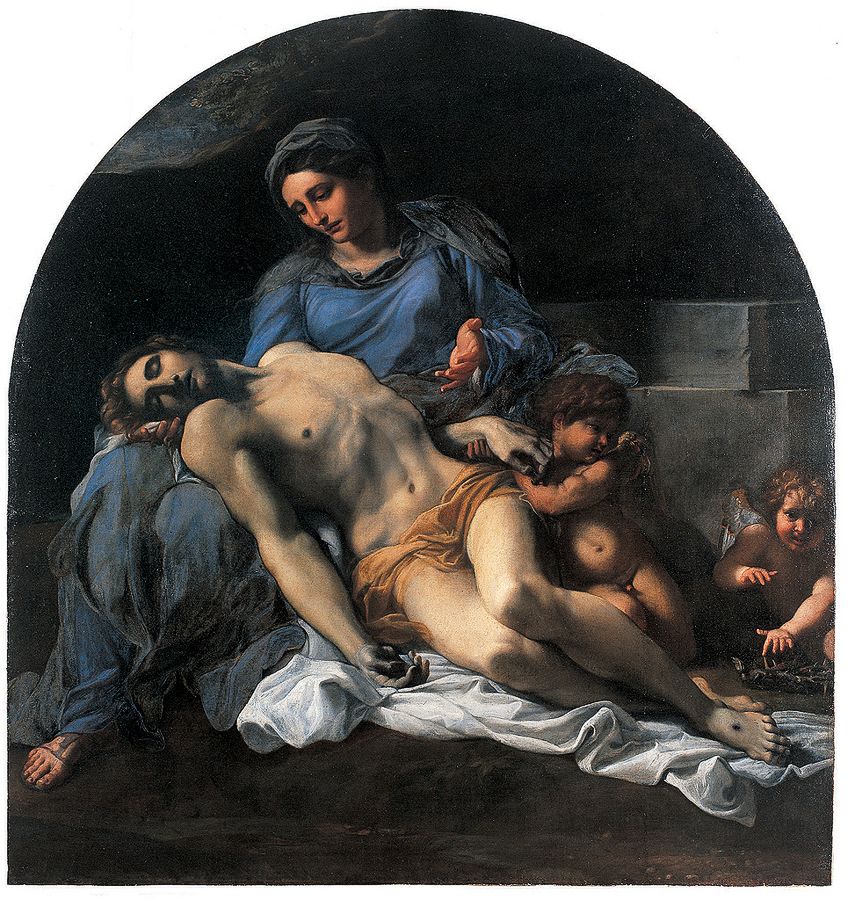
Caravaggio (1571 – 1610)
| Artist Name | Michelangelo Merisi da Caravaggio |
| Date of Birth | 29 September 1571 |
| Date of Death | 18 July 1610 |
| Nationality | Italian |
| Associated Movements, Themes, and Styles | Baroque art, Renaissance, mythology, chiaroscuro painting, and still-life |
| Mediums | Painting |
Caravaggio was a revolutionary artist of his time, and lived a more conflicted lifestyle, being involved in numerous crimes. He started his artistic training in Mannerism in Rome, but he eventually moved away from this style and adopted a more naturalistic approach. He became a popular artist due to his innovative style of painting and use of subject matter.
Caravaggio painted from the world around him and would often incorporate everyday imagery with the sacred figures. In a way, he bridged a gap between the normalcy of life with the sacred. He made saints human, and some sources refer to the concept of “spiritual populism”, in which he made sacred, religious art available to the ordinary man on the street.
The divine was not a far-off ideal of perfection anymore, which was in line with what the Catholic Church wanted from art during the Counter-Reformation.
Many of the great examples of Caravaggio paintings include The Calling of Saint Matthew (1600), The Martyrdom of Saint Matthew (1600), Crucifixion of Saint Peter (1601), Death of the Virgin (1606), and the Flagellation of Christ (1607), among many others. You may notice Caravaggio’s radical Realism in his painting, Death of the Virgin (1606), which was criticized for its portrayal of Mary. The dead virgin in this painting was Mary, but the artist depicted her lifeless body as just another woman, which leads viewers to believe that the woman was a commoner.
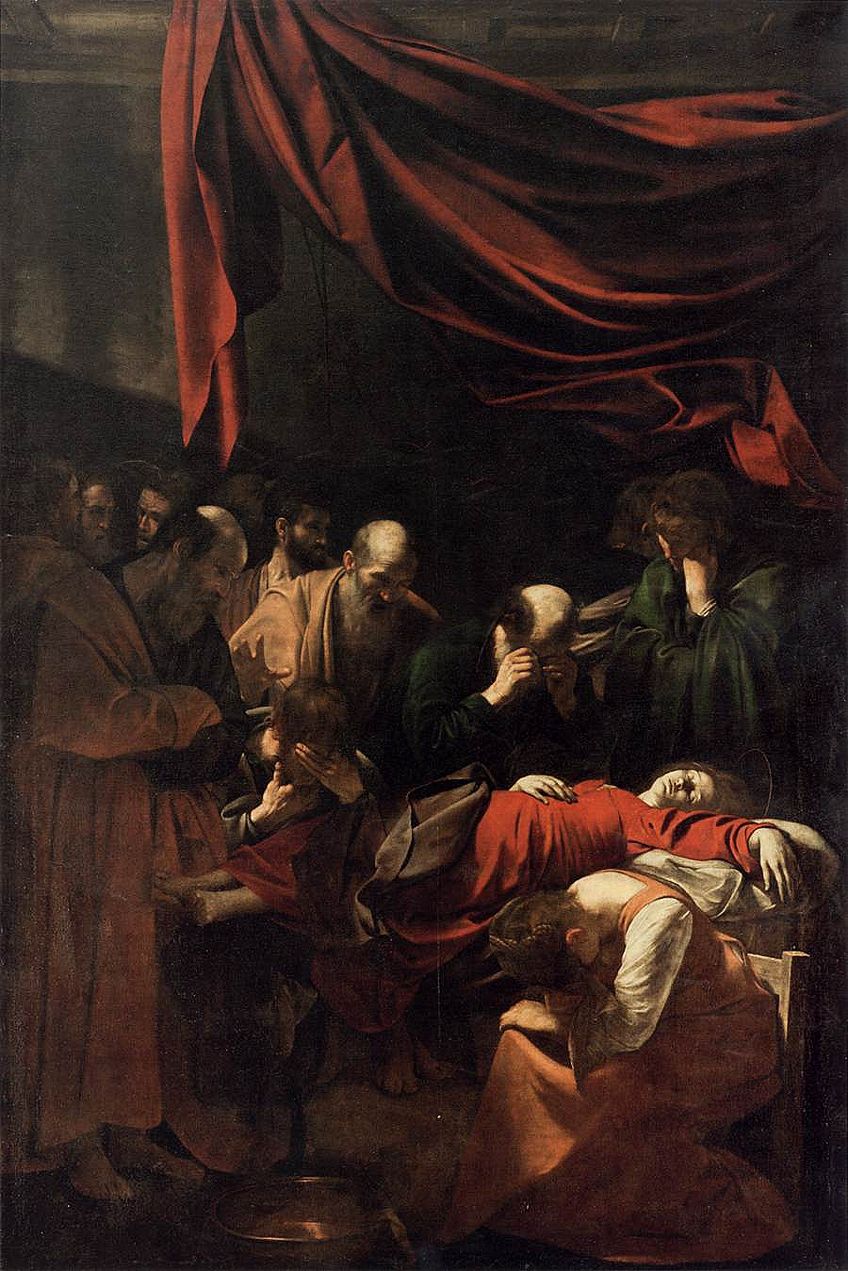
Caravaggio emphasizes the naturalness of this composition with various elements, such as the simplicity of her clothing, her hands and feet appearing swollen, and the simplicity of the scene and men around her body mourning her. The only indication of her being a holy figure is the thin halo around her head. Caravaggio opens the whole scene to the viewer in the forefront, with the various mourners seemingly creating a backdrop in the background, thus forcing the viewer to be there with the dead body of Mother Mary.
Additionally, we see the use of stark contrast of dark and light in many of Caravaggio’s paintings. His use of the chiaroscuro technique became a signature characteristic of his artworks. This also influenced many other artists around Europe and became a phenomenon called Carravagism.
Artemisia Gentileschi (1593 – 1656)
| Artist Name | Artemisia Lomi or Artemisia Gentileschi |
| Date of Birth | 8 July 1593 |
| Date of Death | 1653 |
| Nationality | Italian |
| Associated Movements, Themes, and Styles | Baroque art, portraiture, Caravaggisti, Feminism, chiaroscuro painting, and Realism |
| Mediums | Painting |
Artemisia Gentileschi was a prominent female artist during the Baroque period. She is remembered for her use of techniques like chiaroscuro, a close second to Caravaggio. She also portrayed many women from biblical stories, scenes of rape, and various power struggles, as well as emphasizing the role of a woman within a man’s world, as the art world was mainly dominated by men at the time. Her scenes depicted the realism we so often see from many Baroque masters.
Some of her popular works include Susanna and the Elders (1610), Danae (1612), and Judith Slaying Holofernes (c. 1620), which is a dynamic artwork and one also done by Caravaggio. In Gentileschi’s version of Judith Slaying Holofernes (c. 1620) we see the artist focusing more on the women slaying the male figure, who appears to struggle as they pin him down and begin the beheading process.
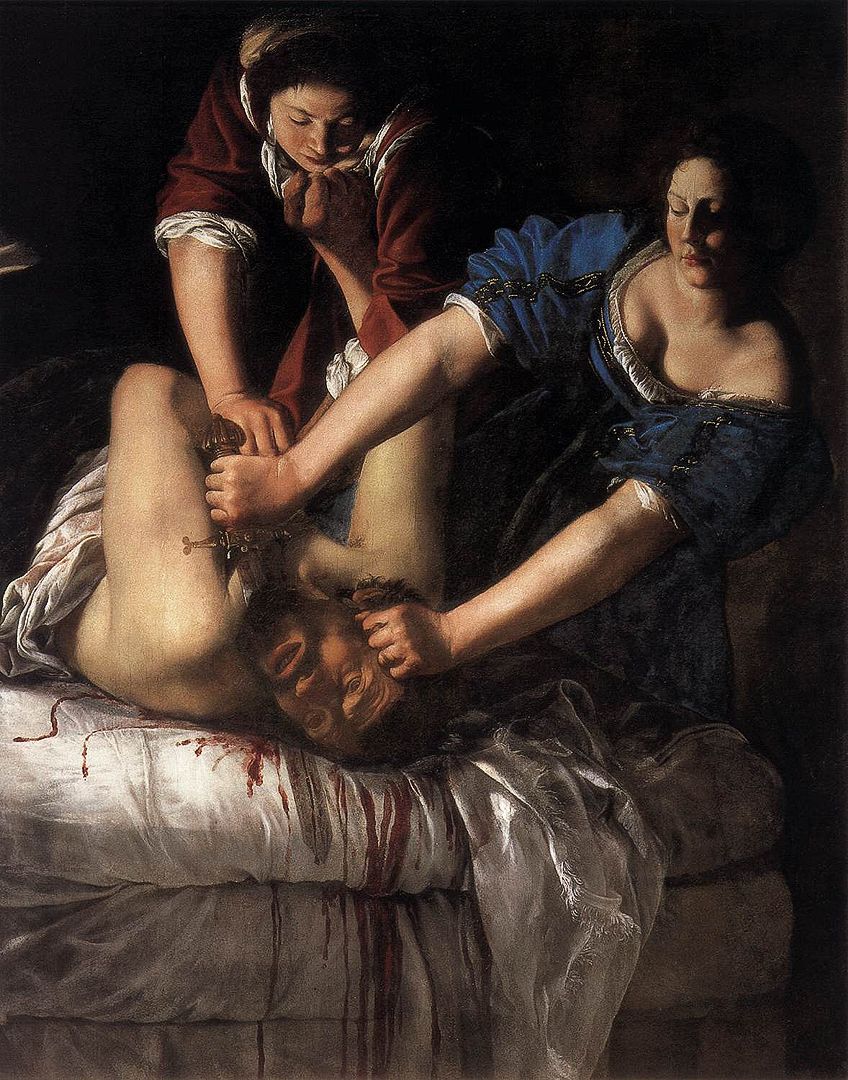
This composition takes place in the heat of the moment, so to say, as we also notice how the blood sprays out of the neck, making the whole scene all the more emotionally intense and severe. She also used darker areas of color with the chiaroscuro technique in addition to a deep palette of colors.
Other aspects of this composition point to the power Gentileschi displayed as an artist herself, being able to portray her subject matter the way she wanted to. The violent display of power and death in this painting also points to the underlying motivation for painting a scene like this, as she was the victim of sexual assault as a young woman.
Baroque Architecture
Baroque architecture was characterized by ornate decorations, high ceilings decorated with frescos, and lavish ornamentation to draw viewers’ attention and spark an emotional reaction of awe. It is important to note the role of the Jesuits in Baroque architecture.
The Jesuits were a religious order at the time of the Counter-Reformation and sought to create a new type of architecture to inspire the people and depict the majesty of the Catholic Church.
Giacomo Della Porta (1532 – 1602)
| Artist Name | Giacomo della Porta |
| Date of Birth | 1532 |
| Date of Death | 1602 |
| Nationality | Italian |
| Associated Movements, Themes, and Styles | Baroque art and Baroque architecture |
| Mediums | Architecture and sculpture |
Baroque architecture is believed to have started with the Church of the Gesù (1584) and the pioneering style of its façade, which was designed by Giacomo Della Porta, a sculptor and architect in Italy. Giacomo Della Porta was an important architect of the Baroque period. He learned from other great masters of art like Michelangelo and was instructed by Giacomo Barozzi da Vignola (1507-1573), a leading Mannerist architect in Italy.
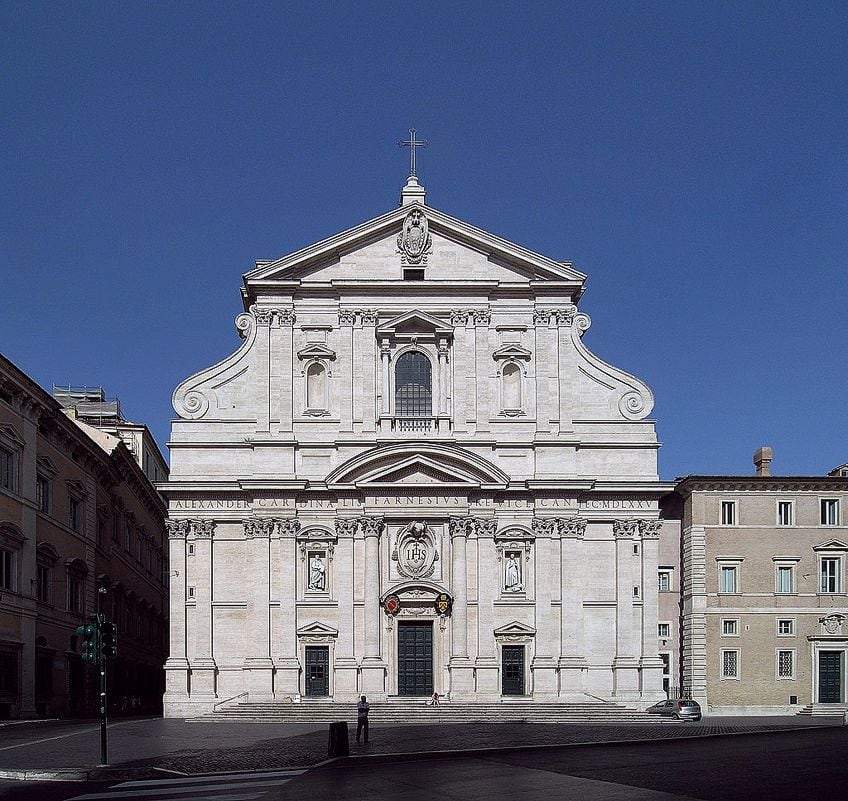
The Church of the Gesù was constructed for the Society of Jesus, also called the Jesuits. Della Porta worked alongside Vignola on this building, and although the appearance of the façade was not as elaborate as the later Baroque buildings, we can see it appears minimally decorated overall with only a concentration of architectural adornments near the entrance, which set the tone for the beginning of Baroque architecture.
Baroque Sculpture
There were many great sculptors during the Baroque period but there was one artist who stood out among everyone else and laid the foundations of what sculpture was. Baroque sculpture was made, as ordered by the Catholic Church, to create awe and inspire the common people.
Baroque sculpture was characterized by various features, namely its interactivity, as viewers were able to walk around the whole sculpture and view its completeness, which made its message more impactful.
It was also used in churches to accentuate architectural structures. Sculptors were so skilled in their art they created works with extensive attention to detail, from gender to the diaphanous nature of the fabric on the sculpted figure.
Gian Lorenzo Bernini (1598 – 1680)
| Artist Name | Gian Lorenzo Bernini |
| Date of Birth | 7 December 1598 |
| Date of Death | 28 November 1680 |
| Nationality | Italian |
| Associated Movements, Themes, and Styles | Baroque art and Baroque architecture |
| Mediums | Sculpture and architecture |
This brings us to Gian Lorenzo Bernini, a famous architect and sculptor in Italy. He was predominantly a sculptor and has been compared by some scholars to possess the same importance that Shakespeare had for the world of theater and literature.
Bernini was considered a prodigy during his early years, with many comparing him to Michelangelo.
Bernini’s sculptures depicted the moment of action taking place, which added to the intensity of the work upon viewing it. His subject matter consisted of biblical and mythological scenes and figures, and we can see examples of this in his sculptures like Aeneas, Anchises, and Ascanius (1619), The Rape of Proserpina (1621-1622), Apollo and Daphne (1622-1625), and David (1623-1624).
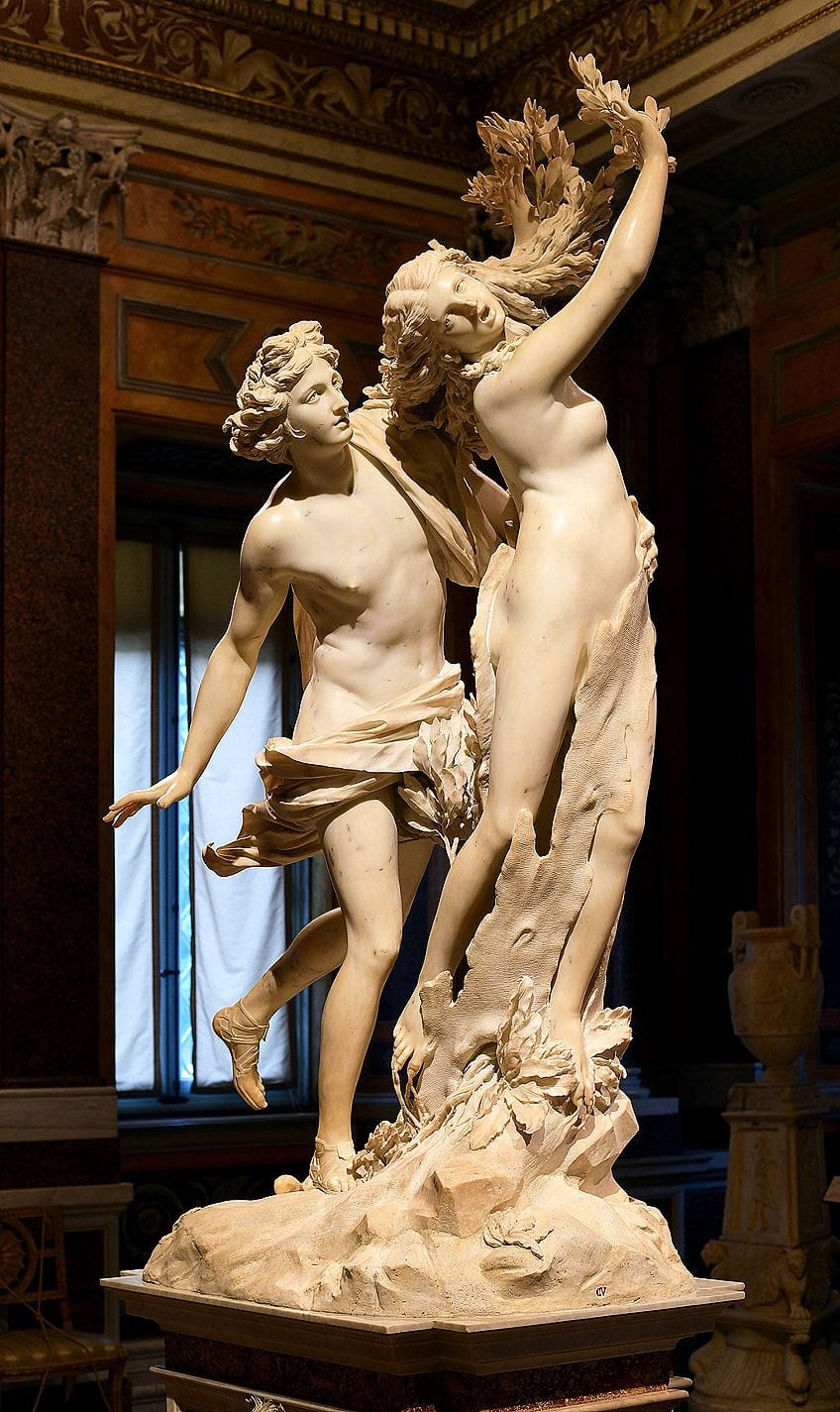
One of Bernini’s greatest sculptures to date is the Ecstasy of Saint Teresa (1647-1652). Made of pure marble, it is housed in the Cornaro Chapel in Rome. The sculpture depicts Saint Teresa of Avila lying half-conscious on a cloud with an angel. The angel is slightly elevated, next to her body on her right, and just about to pierce her heart with a spear.
The marble is carved in such a way that makes the Saint appear as light as a feather floating on a cloud, which highlights the story Bernini is portraying here.
Here, we see Saint Teresa experiencing a deep moment of ecstasy. It appears spiritual in nature, but Bernini also focused on the physical and sensual effects this experience gave the Saint. We see this in the way her body lies as well as her facial expression. Behind the central figures, we also notice what appears like rays of light shining down on the moment of pure bliss.
When we look at the whole composition, we will also notice the central figures are within a columned structure with two theater boxes on either side of the main subject of the Saint and Angel. The theater boxes are directly opposite each other and contain sculptures of the Cornaro family.
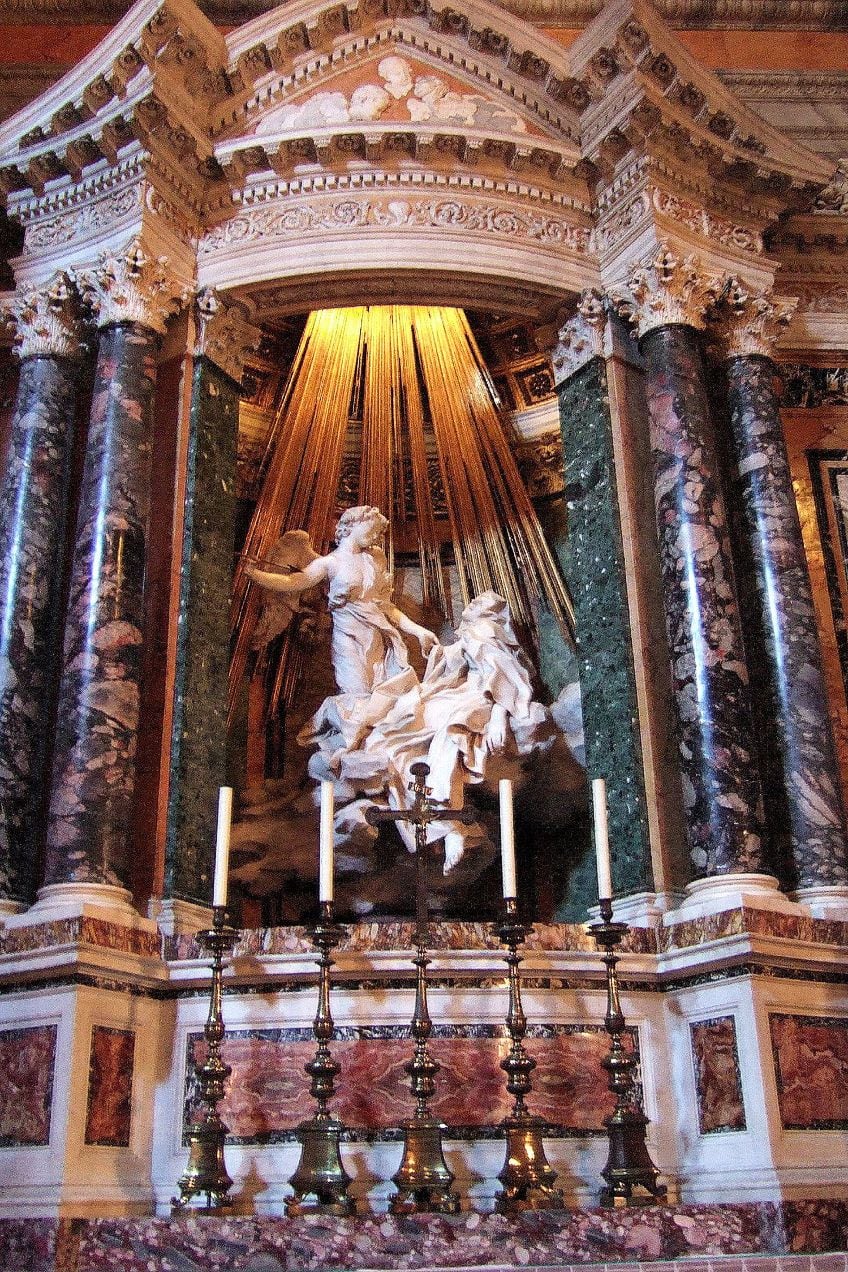
Notable Baroque Painters Beyond Italy
While styles in Baroque architecture had a lasting influence on generation of artists to follow the 17th century, other art forms such as furniture design also thrived solely in the 17th century. Below are other famous Baroque artists worth noting, especially those who came from different European countries other than Italy.
Flemish Baroque Artists
Peter Paul Rubens (1577-1640) was an influential Flemish artist, who created artworks with religious and mythological themes. His portfolio was diverse and ranged from landscapes and portraits to altarpieces and large paintings. This Baroque period artist was known to give Northern Baroque painting a new perspective. He was influenced by artists like Titian and incorporated a diversity of male and female figures in the nude in his paintings.
Furthermore, his paintings depicted strong emotional vibrancy and were often described as exuberant in style.
Some of his famous artworks include The Elevation of the Cross (1611), Massacre of the Innocents (1612), Prometheus Bound (1618), The Adoration of the Magi (1624), Venus and Adonis (1635), The Three Graces (1639), and the Return of the Peasants (1640), the latter of which depicts Ruben’s passion for landscapes. Apart from figures like Rubens, other Flemish painters of the Baroque style included Sir Anthony van Dyck (1599-1641), David Teniers the Younger (1610-1690), and Pieter van Bloemen (1657-1720).
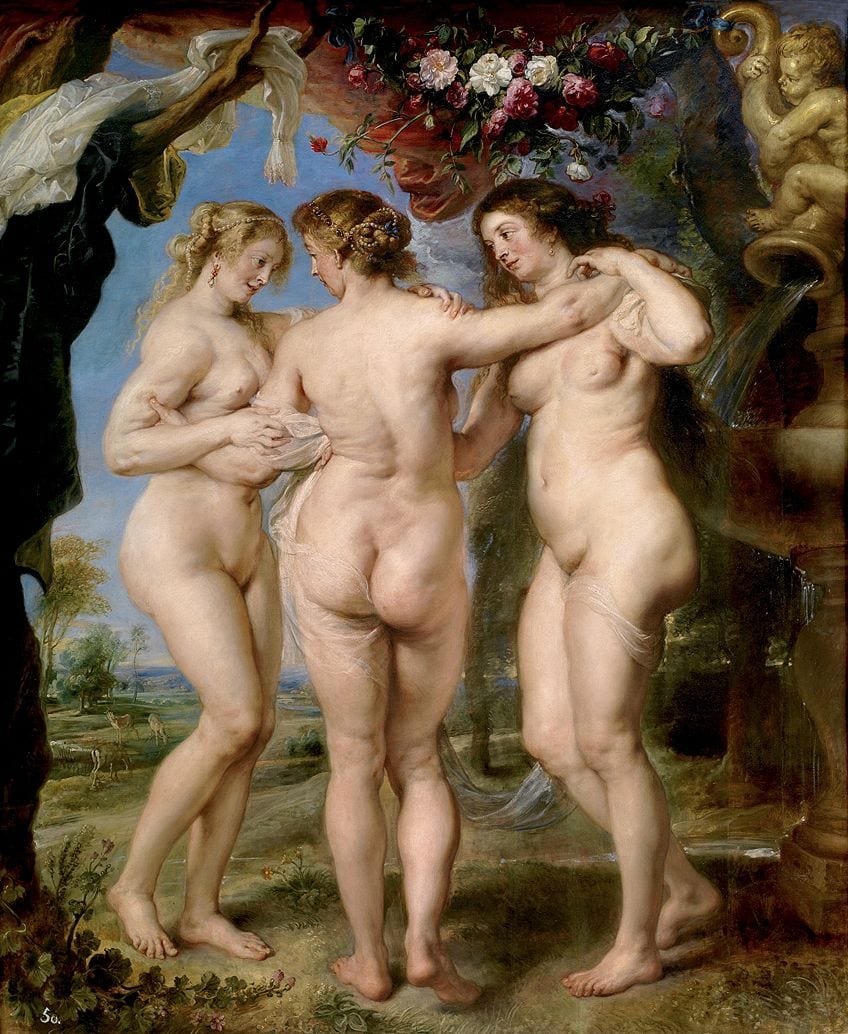
French Baroque Artists
There are many renowned French Baroque artists who have left a significant impact on the development of French Baroque art. These include figures like Philippe de Champaigne (1602-1674), Laurent de La Hyre (1606-1656), Louise Moillon (1610-1696), and Charles Le Brun (1619-1690). Among the most prolific figures was Georges de La Tour (1593-1652), who created artworks using strong chiaroscuro effects similar to that of Caravaggio’s approach.
What made La Tour’s paintings different was his simplified approach and rendering of figures. He was known for depicting scenes that feature candlelit settings. Where Caravaggio’s paintings depicted emotional intensity, La Tour’s paintings depicted an emotional stillness. His subject matter included religious figures and narratives. Famous examples of his artworks include The Penitent Magdalene (c. 1640), Joseph the Carpenter (1642), Nativity (1644), and The Newborn Christ (1645).
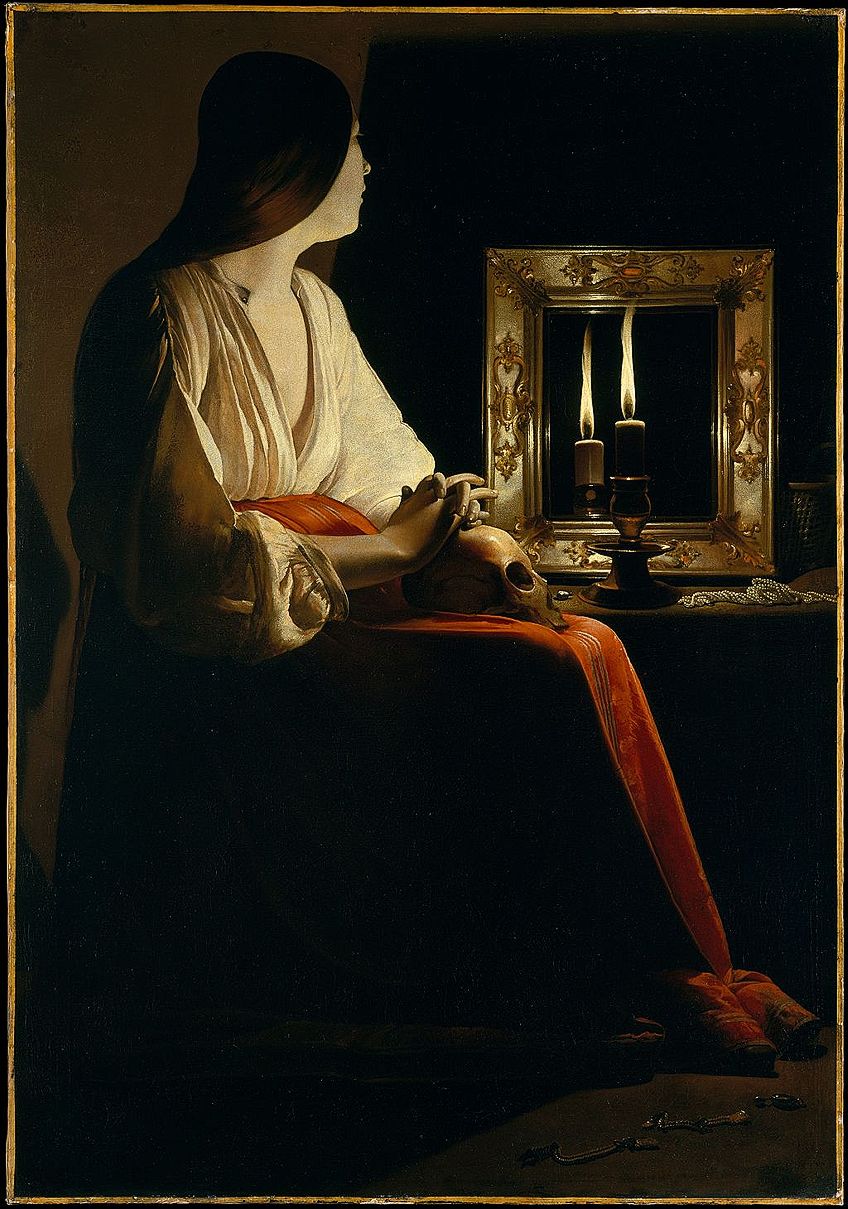
Spanish Baroque Artists
Diego Rodríquez de Silva y Velázquez (1599-1660) was a Spanish Baroque period artist who also painted for King Philip IV’s court, which led him to paint numerous portraits of court officials as well as of the Spanish royal family. He was well-known as one of the pioneering portraiture artists of his time. Many sources also refer to him as the “the painter’s painter” due to his extensive attention to detail in his paintings. He often painted everyday scenes of people and nature.
Some of his famous artworks include The Supper at Emmaus (1618-1623), The Surrender of Breda (1635), Portrait of Juan de Pareja (1650), Portrait of Innocent X (1650), and Las Meninas (1656), the latter of which was one of the most famous artworks by the artist due to the strategic rendering of compositional elements like space, color, perspective, and line. Other renowned Spanish Baroque painters include artists like Jusepe de Ribera (1591-1652), Juan de Pareja (1606-1670), and Bartolomé Esteban Murillo (1617-1682).
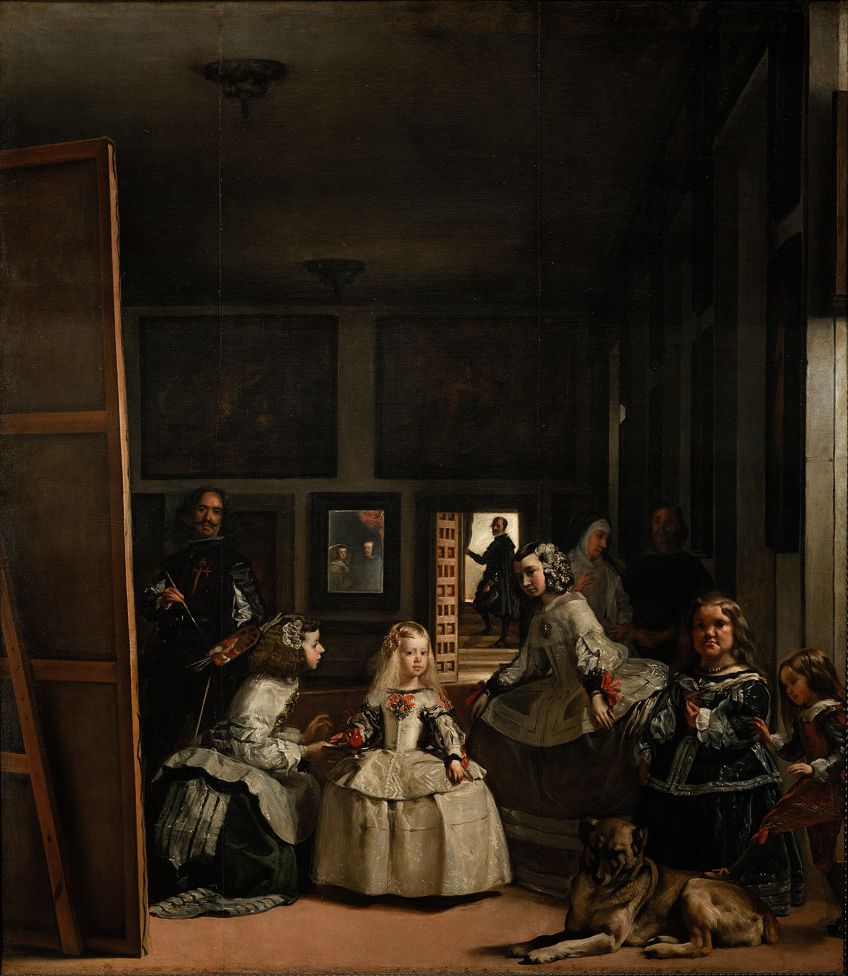
Dutch Baroque Artists
Rembrandt Harmenszoon van Rijn (1606-1669) was one of the most influential and well-known Dutch painters, who to this day, is remembered as an important artist. This Dutch Baroque period artist produced many great artworks during his career, including the masterpiece, The Night Watch (1642). Rembrandt created different scenes of everyday life, landscapes, as well as religious and mythological subjects. Rembrandt’s paintings are known to have captured the affluence during the Dutch Golden Age, and was admired by other Dutch contemporaries such as Johannes Vermeer, Frans Hals the Elder, Pieter de Hooch, and Jan Havickszoon Steen.
Rembrandt’s paintings showed varied emotional states including a keen eye for detail while painting his scenes.
He also utilized techniques of light and dark contrasts (chiaroscuro) and innovative ways of handling his paint and brushstrokes, often using different textures. Some of his famous paintings include The Anatomy Lesson of Dr. Nicholas Tulp (1632), Man in Oriental Costume (1632), The Night Watch (1642), Slaughtered Ox (1655), Jacob Blessing the Sons of Joseph (1656), and Self-Portrait with Two Circles (1660).
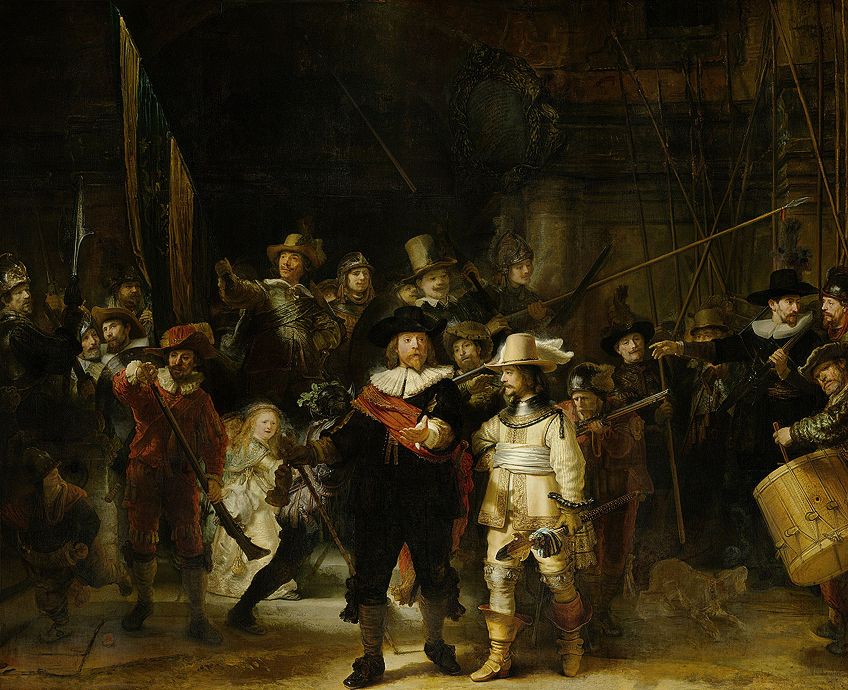
From Dark to Light: Baroque and Rococo
The Baroque period, which started in Rome, eventually evolved into what was called the Rococo period, which started around 1702 until 1780 in France. The Rococo period was a time during which art portrayed a sense of lightness as opposed to the darker portrayals we see from the Baroque period. What both art movements shared was the dramatic flair in their artworks and the use of ornate decorations, as seen in paintings, sculpture, and architecture.
Baroque continued to live on in the future with many Baroque period artists influencing other artists from the Rococo period, as well as subsequent art movements like Romanticism, Impressionism, and Post-Impressionism. Contemporary artists and architects like I.M. Pei and Frank Gehry have also drawn inspiration from Bernini’s creations.
Baroque art was an innovative art period led by many great artists of its time who sought to move beyond the boundaries of what art was before. With a foundation in depicting the realness and naturalness of life and its people in combination with the sacred imagery of biblical and mythological figures, Baroque art brought the idealistic aspects of art down to earth.
You can also read our Baroque art facts webstory.
Frequently Asked Questions
What Is Baroque Art?
Baroque art was an art period during the Counter-Reformation when the Catholic Church was in opposition to the Protestants, who had started the Reformation. As part of the reaction, the Catholic Church wanted art to inspire the masses and leave them in awe of the magnificence and beauty of not only the Church, but the power and majesty of the biblical and mythological narratives portrayed in paintings, sculpture, and architecture. Baroque art flourished since the early 17th century in Europe and lasted until the mid-18th century.
What Are the Characteristics of Baroque Art?
Baroque art was characterized by the use of ornate decorations in paintings, sculpture, and architecture. Baroque artists portrayed a heightened sense of emotion in their paintings, often through the depiction of a scene with intense action and movement. Furthermore, the Baroque period was also known to be theatrical while remaining true to the styles of Classicism and Naturalism. Many artists used new techniques to emphasize emotion, including chiaroscuro, which explored light and dark contrasts.
When Was the Baroque Period?
The Baroque period started as an art movement after the Renaissance and Mannerism art periods, and was followed by the Rococo art movement. The Baroque era in art history is widely understood to have reached its height in the 17th century in Rome and was used to appeal to the intensity of human emotions, including drama, exaggeration, dynamism, and grandeur.

Emma completed her Bachelor’s Degree in International Studies at the University of Stellenbosch. She majored in French, Political Science, and History. She graduated cum laude with a Postgraduate Diploma in Intercultural Communication. However, with all of these diverse interests, she became confused about what occupation to pursue. While exploring career options Emma interned at a nonprofit organization as a social media manager and content creator. This confirmed what she had always known deep down, that writing was her true passion.
Growing up, Emma was exposed to the world of art at an early age thanks to her artist father. As she grew older her interests in art and history collided and she spent hours pouring over artists’ biographies and books about art movements. Primitivism, Art Nouveau, and Surrealism are some of her favorite art movements. By joining the Art in Context team, she has set foot on a career path that has allowed her to explore all of her interests in a creative and dynamic way.
Learn more about the Art in Context Team.
Cite this Article
Emma, Littleton, “Baroque Art – Exploring the Exuberance of Baroque Period Art.” Art in Context. April 23, 2021. URL: https://artincontext.org/baroque-art/
Littleton, E. (2021, 23 April). Baroque Art – Exploring the Exuberance of Baroque Period Art. Art in Context. https://artincontext.org/baroque-art/
Littleton, Emma. “Baroque Art – Exploring the Exuberance of Baroque Period Art.” Art in Context, April 23, 2021. https://artincontext.org/baroque-art/.


